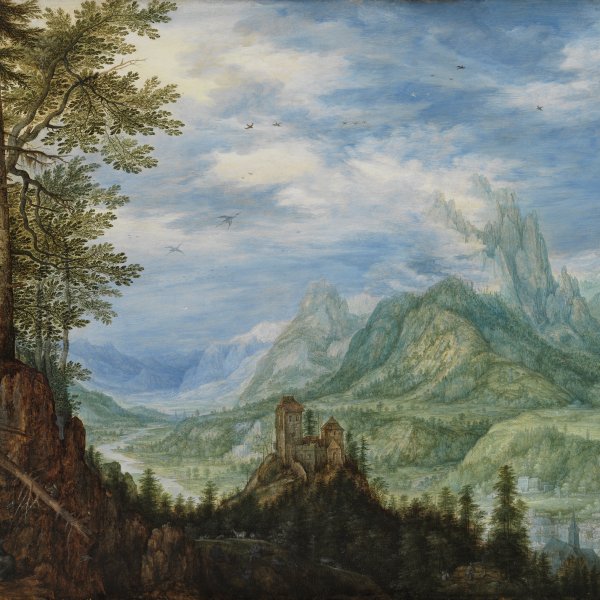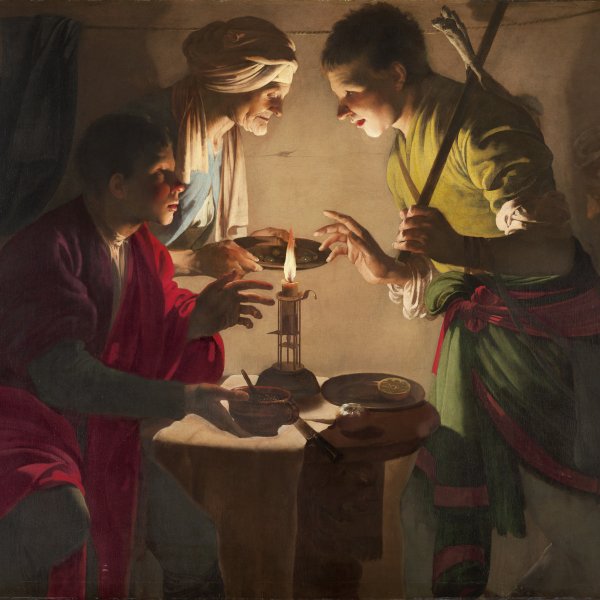Chinese Vase with Flowers, Shell and Insects
This floral still life, which entered the Collection in 1957, features the most characteristic traits of Ambrosius Bosschaert’s style. Its provenance can be traced back to the 18th century when it belonged to Jan Nicolaas van Eys. For much of the 19th century and until the mid-20th century the panel was in the UK in the possession of three families until 1953 when it appeared on the art market in an exhibition on Dutch and Flemish art organised by the Eugene Slatter gallery in London.
Ambrosius Bosschaert founded a dynasty of artists who executed floral still lifes, a genre that became fully independent in the 17th century and which was highly appreciated in its time. Much of his career was spent in the important city of Middelburg where the models that he developed in his compositions continued to be used until well into the 17th century. Bosschaert’s compositions were known and appreciated by contemporary clients who paid high prices for them although he never achieved the level of prestige of Jan Brueghel, the other great master in this genre.
The principal motif of the vase of flowers is set against a plain, simple background painted in shades of grey that reveals the copper panel beneath the paint layer in some areas. Bosschaert located the vase on a simple ledge and used a uniform lighting that places equal emphasis on the different types of flowers in the bouquet. The precision and detail with which each flower, stalk and leaf is painted, regardless of whether it occupies a prominent or a secondary position, is one of Bosschaert’s most typical traits. The bouquet is arranged symmetrically using a vertical structure with striking, striped tulips in the centre, a flower that Bosschaert frequently depicted. White, red and pinkish roses lean out over the edge of the vase, which also has some beautiful white lilies on the left in the centre as well as pinks, irises and columbines. The vase is a Chinese porcelain one with a gilt-metal mount, a precious object of high quality that competes with the flowers within it.
Bosschaert did not generally paint his flowers from life, as he tended to depict arrangements containing flowers in bloom at different seasons. Many of his bouquets are constructed from preliminary sketches and drawings produced in his studio. When selecting which flowers to depict Bosschaert generally chose costly, luxurious blooms, sometimes mixed with wild ones. The artist also generally included other elements from the natural world such as the shell, here arranged on the ledge on the left, insects, including a butterfly on the right, and other small creatures such as the caterpillar moving along one of the stalks in the foreground and another one on one of the iris leaves.
This copper panel is unusual in that it has the date of its manufacture, 1607, on the reverse, as well as the name of the craftsmen, Peeter Stas, who made it. The present painting has been compared with two other compositions by the artist, one in the Ashmolean Museum, Oxford, and the other in the Kunsthistorisches Museum, Vienna.
Mar Borobia










